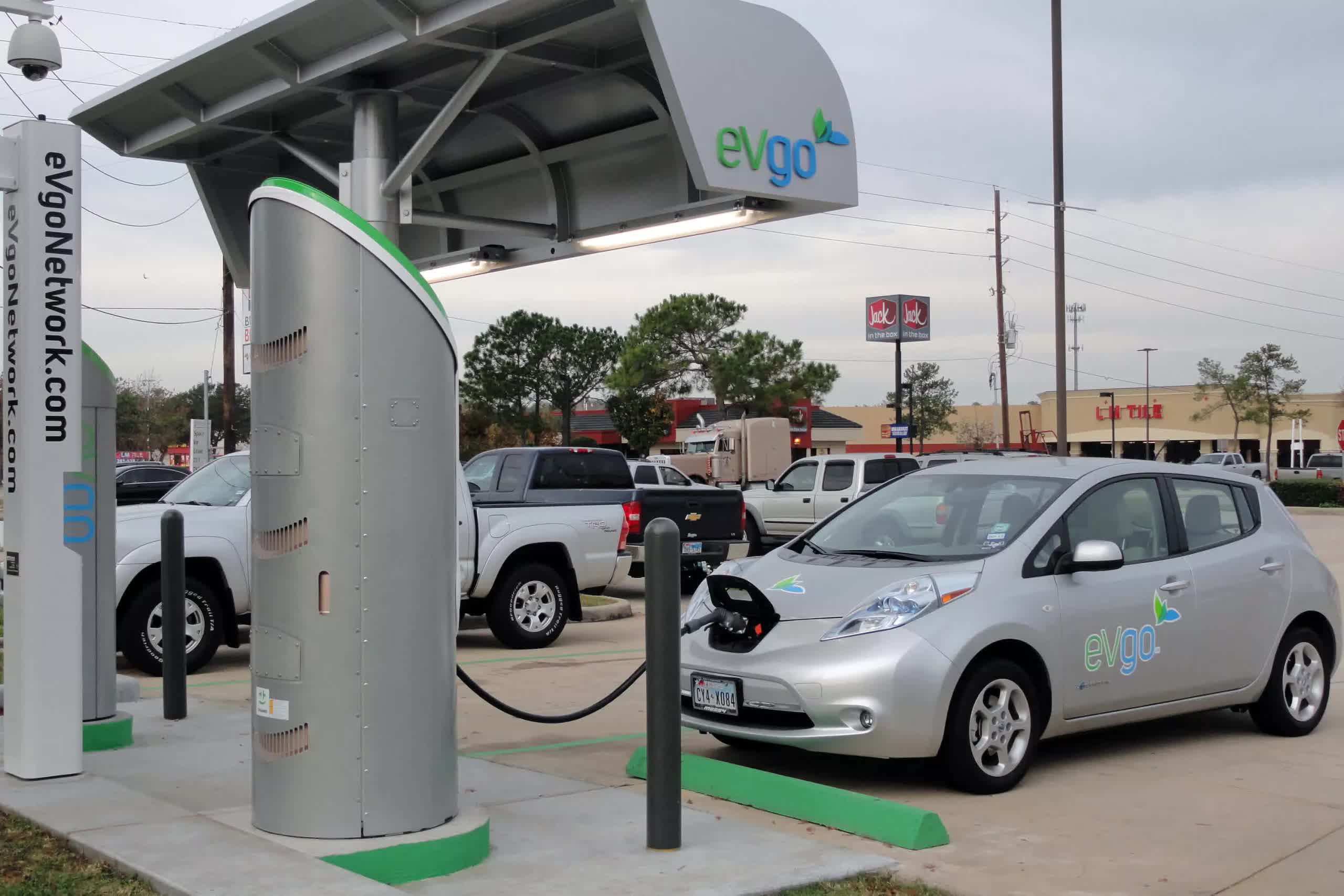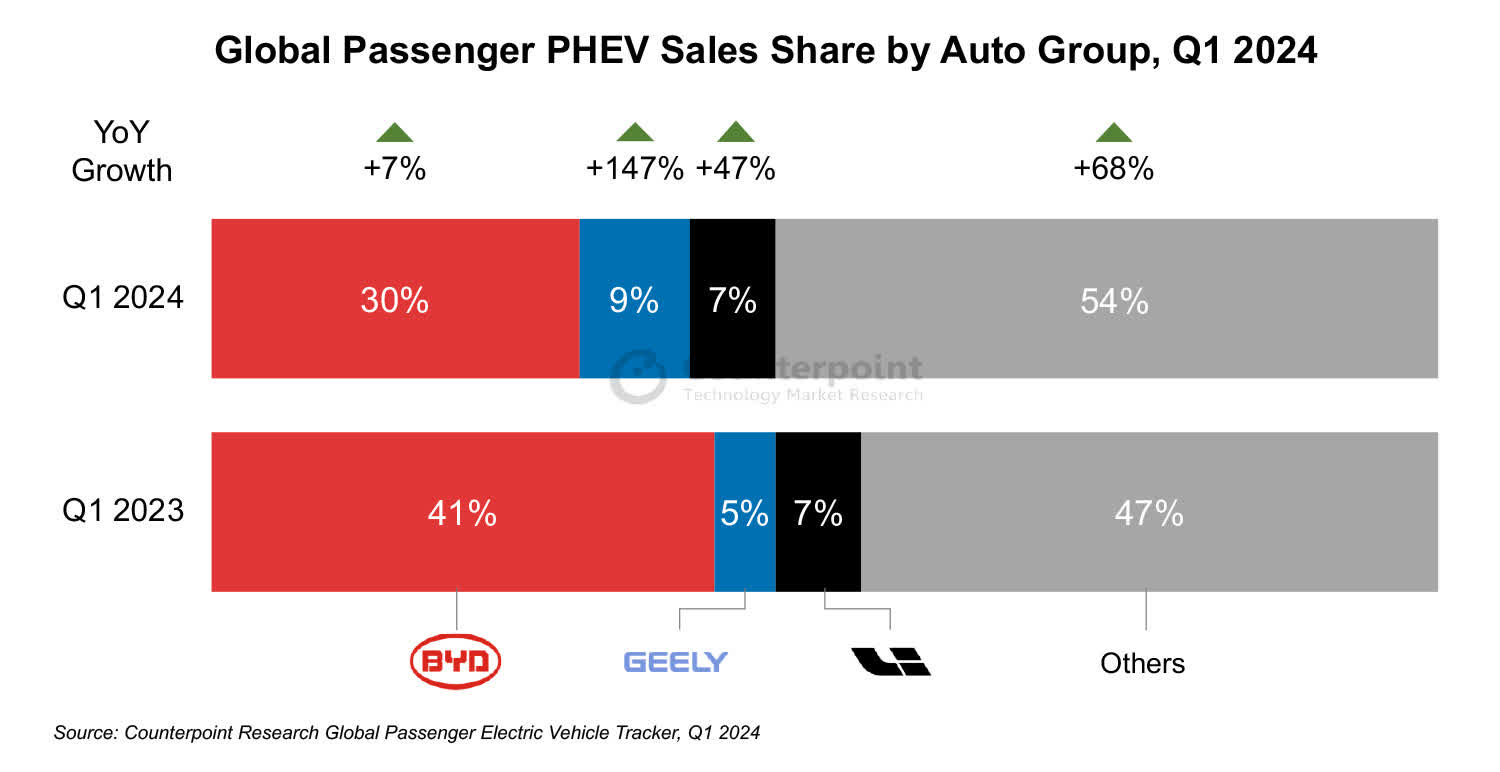In a nutshell: The electric vehicle revolution kicked into higher gear in the first quarter of 2024, with global EV sales jumping 18% compared to the same period last year. But while that double-digit growth looks impressive on paper, there are some concerning undercurrents rumbling beneath the surface.

The latest Counterpoint report has revealed that the biggest driver of Q1's sales surge is plug-in hybrid electric vehicles (PHEVs), which combine a gas engine with an electric motor and battery pack. PHEV sales were up a whopping 46% year-over-year as consumers were lured in by their cheaper upfront costs and the ability to switch to gasoline for longer drives.
Meanwhile, sales of pure battery electric vehicles (BEVs) increased at a much more modest 7% clip year-over-year. Demand is softening as the initial wave of early adopters has been largely tapped out and cost-conscious mainstream buyers get sticker shock over high EV prices.
The slowing BEV sales appear to be causing major headaches for automakers who have sunk billions into developing the next generation of electric cars, trucks, and SUVs. Despite the huge investments, some are still losing eye-watering amounts of money on each EV they sell as they struggle to rein in manufacturing costs.

Last month, Ford's EV division alone reported a staggering $1.3 billion loss in Q1 while delivering just 10,000 vehicles - a $132,000 loss per car. It's no wonder Ford and others have been scaling back ambitious BEV targets and pushing harder into the more lucrative PHEV market as a stopgap solution.
The overall EV market remains heavily tilted towards China, which saw sales spike 28% year-over-year in Q1 and now accounts for over half of global EV sales. In the US, growth was a much more modest 2% as higher prices and economic jitters put a damper on demand.
When it comes to individual automakers, there were some definite winners and losers in Q1. BYD had a huge quarter, posting 13% BEV sales growth globally while also dominating the PHEV market with a nearly one-third share. The Chinese upstart capitalized on its cost advantages to capture major market share, including exporting almost 100,000 EVs for 152% year-over-year growth.
In contrast, EV pioneer Tesla saw its sales dip 9% year-over-year despite regaining the overall BEV sales crown with a 19% market share. Tesla has been aggressively slashing prices to move metal, and it recently announced major layoffs impacting over 10% of its global workforce as it looks to cut costs.
The overall outlook for the rest of 2024 remains cloudy. While continued growth is expected, analyst Liz Lee warns "signs of a slowdown also loom and the annual growth may dip below 20%."
Plug-in hybrids are driving EV sales growth, but industry faces roadblocks ahead
